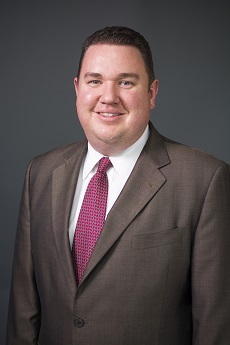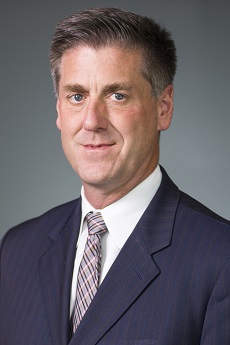OR Efficiency, Machine Learning Boosts UCHealth’s Revenue by $10M
UCHealth used a machine learning queuing system to switch from traditional block scheduling to a service-based model to improve OR efficiency and increase volume.

Source: Thinkstock
- Moving from traditional block scheduling for the operating room (OR) to more of a service-based system that used machine learning maximized OR efficiency and increased revenue by $10 million across UCHealth’s University of Colorado Hospital ORs.
Hospital ORs are cost centers. Unlike physician offices or outpatient centers, ORs require a large volume of readily available staff and supplies, a conducive and sterile environment for surgery, large medical equipment, and even backups in place in case of an emergency.
The resource-intensive hospital department represents more than 40 percent of total hospital expenses, with an OR costing between $36 and $37 per minute, according to a recent JAMA study analyzing OR time in California.
With costs increasing by the second, every minute counts in the OR. Yet hospitals frequently report scheduling inefficiencies that result in wasteful spending and decreased patient volumes.
Various reports say that OR delays occur in 40 to 96 percent of cases, but a recent case study uncovered that most hospitals are on the higher end of that range. About 88 percent of cases were delayed at three high-volume urban hospitals, the study in the Journal of Patient-Centered Research and Reviews showed. The average OR delay time was 28.2 minutes, meaning hospitals are spending up to $1,043 more per delay.
READ MORE: 4 Revenue Cycle Management, Claims Reimbursement Strategies
Traditional block scheduling, in which surgeons are assigned a block of time for their procedures, exacerbates an already inefficient schedule. Time is strictly defined under the scheduling model and switching or filling empty slots is difficult with the rigid system.
Time is of the essence with hospital ORs, which is why UCHealth’s Chief Information Officer Steve Hess and Chief Operating Officer Tom Gronow teamed up to redesign the hospital’s block scheduling strategy.
“The problem we were trying to solve was that a lot of hospitals use OR block times,” Gronow recently told RevCycleIntelligence.com. “Typically, one or two days a week those blocks get assigned and we only look at utilization from 7:30 am until about 5:00 pm. That’s the key operational time for the OR.”

But not all the surgeons needed that eight-hour block. “Some people will use four-hour chunks and only operate half the day,” he said.
The hospital needed a service-based approach that was more flexible than block scheduling and allowed surgeons to conveniently and quickly fill those gaps.
READ MORE: Preparing the Healthcare Revenue Cycle for Value-Based Care
However, the hospital lacked the information and analytics power to sit down and manually create a service-based scheduling model, Hess explained.
“We used to spend a lot of time with Tom’s team, surgeons, and so on to create a dashboard of data by room and surgeon that actually got into utilization,” he said. “We were able to produce statistics around block utilization, room utilization, and so on. But it was all rear-view mirror data. It wasn’t what happened last week or last month.”

“What that meant was the operations team and surgeons would have to sit down and stare at this data and try to make sense of it,” he continued. “They had the data, but it was all about what happened in the past and not about anything that they could do to impact the future.”
UCHealth needed current information on OR operations to develop schedules that worked best for each department’s volume of procedures and past use.
The hospital partnered with LeanTaaS to create a specialized machine learning queuing platform for the hospital’s OR scheduling. The platform drew on the most recent data to support hospital decision-makers who manage OR resources and schedule procedures.
READ MORE: Good Data, Better Value-Based Care Can Boost Population Health
“We now have a tool that allows us to analyze what happened yesterday, last week, or last month,” Hess explained.
“Instead of giving out quarterly data and looking at utilization as a static number, this shows utilization on a weekly basis,” Gronow added. “Surgeons get statistics, so they know what their operational performance is. They know that the OR executive and department chairs are looking at this data and we are going to make operational decisions based on how well or poorly they are utilizing the data.”
OR scheduling transparency incentivizes surgeons to use their time in the operating room wisely.
“The consequence of poor utilization is that your block may be taken away or shortened,” he said. “The benefit of good utilization is that we will try to allocate more time to you because you might be a surgeon who has a growing demand or volume. It is much more dynamic with the ability to look at data almost on a daily basis versus looking at historical data that is three months old and only spans a quarters worth of data.”
The platform also learns from OR scheduling data to better predict an optimal schedule for each operating room. For example, the machine learning tool found that OR blocks should not be eight hours long or limited to “primetime.” Instead, blocks should be from 7:30 am to 2:00 pm and 2:00 pm to 9:00 pm.
“ORs haven’t looked at times beyond 5:00 pm because that’s the end of ‘primetime,’” Gronow said. “We are looking at primetime as something that is really two blocks between 7:30 am and 9:00 pm so that we can accommodate the volume and demand that we have.”
The machine learning tool also transformed how the operations team views open time, he added.
Using the traditional block utilization method, schedulers assign individual surgeons a block regardless of whether they have a light or heavy caseload that week. Surgeons cannot schedule a procedure during another surgeon’s block, Gronow explained.
This left open time in the ORs that was not being leveraged by other surgeons with heavier caseloads.
“This system will recommend, based on practice patterns, open service time for a specific department,” he said. “What that means is that Steve or I can book into that time to use it more efficiently, which helps increase utilization of the OR versus looking at only a surgeon owning a block and only that person being able to schedule into it.”
While machine learning and prescriptive intelligence can create an improved schedule, UCHealth still needed flexibility to account for the human aspect. Canceled surgeries or patient complications are common, but these events leave open OR time.
That room typically remains open under block utilization scheduling because the process to request time from another surgeon’s assigned block is difficult with a such a rigid scheduling system.
“A lot of health organizations will require that block changes and switches are done through a surgeon’s schedule,” Gronow explained. “So, a surgeon has to call the OR trying to barter and figure out what works. That became more of a hassle, and it wasn’t worth the effort for the surgeons. So, surgeries may have been pushed to the week after or the week after that.”
Facing decreased surgery volume and frustrated surgeons, the hospital gave surgeons the opportunity to release blocks of OR time or request blocks for their procedures using the queuing platform that worked on their mobile devices.
“Here we are putting these blocks right in front of the surgeon, so they can say, you know what I have extra time on Friday because I have a light clinic or I have an admin day, but I have two cases that I need to get into the OR,” he said. “I can go and look and see if anyone has blocked time for this Friday. If they haven’t, then I can pick it up and start scheduling into it. From a patient and surgeon perspective that is a huge benefit.”
Putting OR scheduling data literally into the hands of surgeons resulted in a 47 percent boost in the median number of blocks released each month. Surgeons also released their blocks 10 percent sooner, an analysis by LeanTaaS showed.
With increased OR efficiency, UCHealth also noticed a 4 percent increase in OR utilization, which translates to about $400,000 in additional revenue per operating room per year.
The hospital would not have realized a revenue increase of $10 million if not for machine learning and predictive analytics informing future decision-making, Gronow and Hess agreed.
“A lot of healthcare systems have dashboards and they get data out,” Hess explained. “They think they are solving the problem using the dashboards, but this is really hard stuff. Without the machine learning and prescriptive intelligence, figuring out what to do with the data is too difficult.”
As hospitals and health systems are under pressure to reduce costs and transition to value-based reimbursement, actually gleaning insights into an organization’s data will be crucial to achieving operational efficiency.
“We are being challenged in healthcare to become more efficient and think about costs,” Gronow said.
“And we, in healthcare, are really at the forefront of using all this data,” Hess added. “We should be using more advanced machine learning to use our resources more efficiently. The reality is that there are a lot of applications for this. Think about all the different resources across the healthcare system. We need to ensure that we are getting the patients appropriately through those resources, whether it’s a lab, X-ray, OR, or infusion chair, there are a lot of applications for this.”
The hospital of the future will be running analytics like UCHealth’s queuing system and Gronow intends to stay ahead of the curve by continuing to apply advanced analytics to hospital operations.
“We are just scratching the surface on the potential of taking queueing theory to the next level as means to drive predictive operations, reduce variability, and create a better experience for patients,” he concluded. “Developing more modules so that we can continue to drive better operations is where our future is.”
